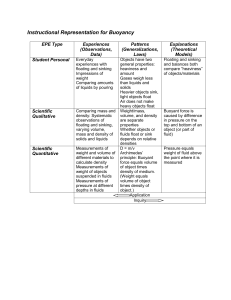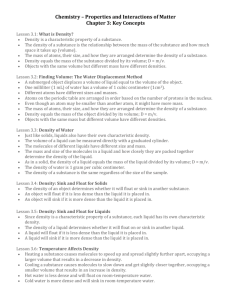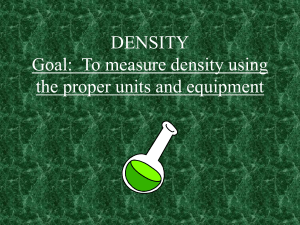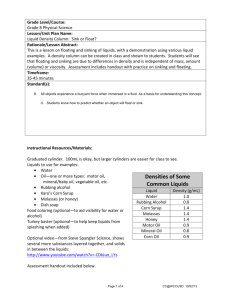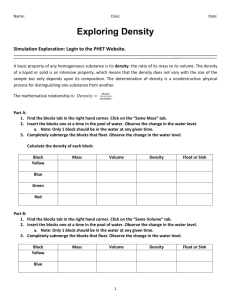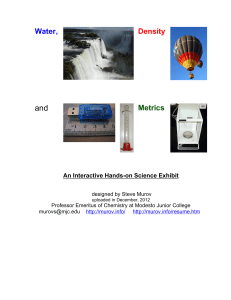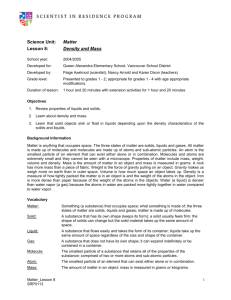Floating and Sinking Activitie
advertisement
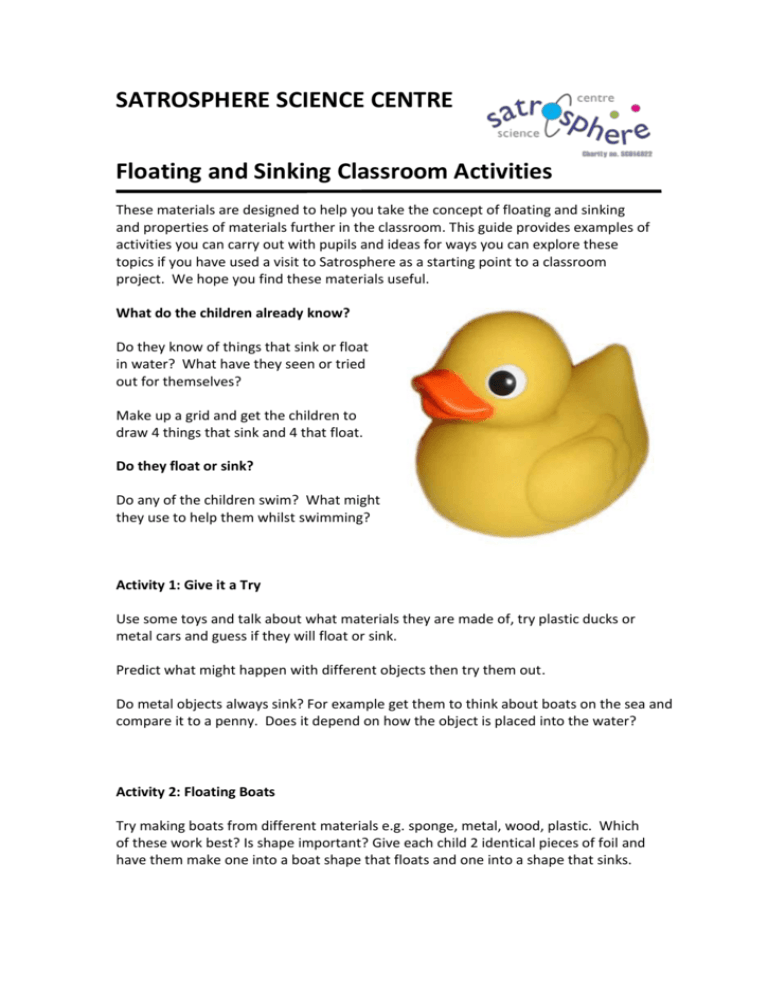
SATROSPHERE SCIENCE CENTRE Floating and Sinking Classroom Activities These materials are designed to help you take the concept of floating and sinking and properties of materials further in the classroom. This guide provides examples of activities you can carry out with pupils and ideas for ways you can explore these topics if you have used a visit to Satrosphere as a starting point to a classroom project. We hope you find these materials useful. What do the children already know? Do they know of things that sink or float in water? What have they seen or tried out for themselves? Make up a grid and get the children to draw 4 things that sink and 4 that float. Do they float or sink? Do any of the children swim? What might they use to help them whilst swimming? Activity 1: Give it a Try Use some toys and talk about what materials they are made of, try plastic ducks or metal cars and guess if they will float or sink. Predict what might happen with different objects then try them out. Do metal objects always sink? For example get them to think about boats on the sea and compare it to a penny. Does it depend on how the object is placed into the water? Activity 2: Floating Boats Try making boats from different materials e.g. sponge, metal, wood, plastic. Which of these work best? Is shape important? Give each child 2 identical pieces of foil and have them make one into a boat shape that floats and one into a shape that sinks. Activity 3: Bubbles Make some soap bubbles and watch them float in air. Make bubble pictures, what do bubbles look like and what do you need to make them? Try blowing bubbles into different liquids with a straw- oil, syrup and water work well- how do the bubbles behave? Have the pupils make a chart to compare the different liquids. Activity 4: Visits Arrange visits from/to the coastguard/lifeboat crew and ask them to talk about what they do. Lifeboat Operations Manager Aberdeen Lifeboat Station Victoria dock entrance York place Aberdeen AB11 5DF 01224 591658 Activity 5: Sea in a Bottle You will need: Coloured water (blue like the sea) Baby oil Small plastic bottles (500ml) with cap Small beads/animals Pour your coloured water into the bottle so it is half full. Add the baby oil into the bottle but stop before it reaches the very top. Drop in some small beads/boats/ducks if you have any so they float on top of the water. Place the lid on tight, (possibly even glue it shut) Let the children play with their bottle and watch what happens when you shake it and hold it different ways. Activity 6: Different Liquids Do objects act differently in different liquids? You will need (per group): Empty plastic bottle with top cut off- the taller the better ½ cup honey ½ cup of vegetable oil Cup of water (you can dye the water with some food colouring for effect) Assortment of small objects - pennies, dried beans, raisins, buttons, matchsticks, rice or paper clips In advance, put ½ cup honey into the bottom of each bottle. Put the children into groups and have them take turns adding the oil and water to their container with the honey. What do they observe? The water should float on the honey and the oil on the water. The densest liquid will go to the bottom and the least dense will float on the top. Once each group has assembled their ‘density layers’, have them investigate which objects float or sink and in which liquids. For example a penny will sink though all 3 liquids, but a raisin will sink though the oil and water and float on honey. As an extension, have the children make a list of other objects they would like to test and make predictions about where they would sink to, they can then collect them and test them out. They can also try making density layers out of other liquids. Very salty water will sink below fresh water and it is possible to build density layers in a test tube using samples of water with different salinities (salt concentrations). You can make a rainbow if you colour each concentration of salty water with a different food colouring. The layers would have to be added slowly with a pipette down the side of the tube to stop them from mixing too much. Activity 7: Water Creatures Look at creatures that live in the water. What kind of water do they live in, salt water or fresh water? What animals live in the sea? Make up your own aquarium from a shoe box and decorate it with seaweed and creatures. You could take the class pond dipping at a local park or with the ranger service where they run educational visits. Ian Talboys Countryside Officer Environmental Services 38 Powis Terrace Kittybrewster Aberdeen, AB25 3RF Tel: 01224 897400 Fax: 01224 894069 Email: italboys@aberdeencity.gov.uk Useful Websites www.kids-science-experiments.com – science experiments with water.

